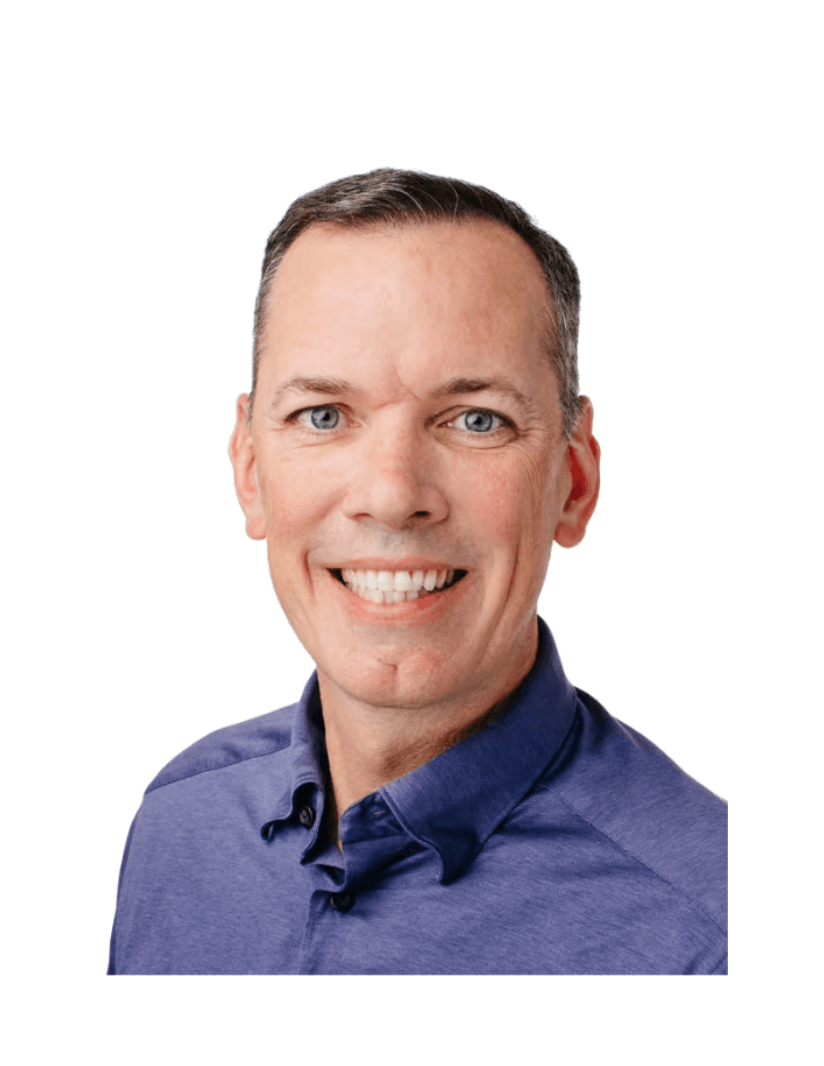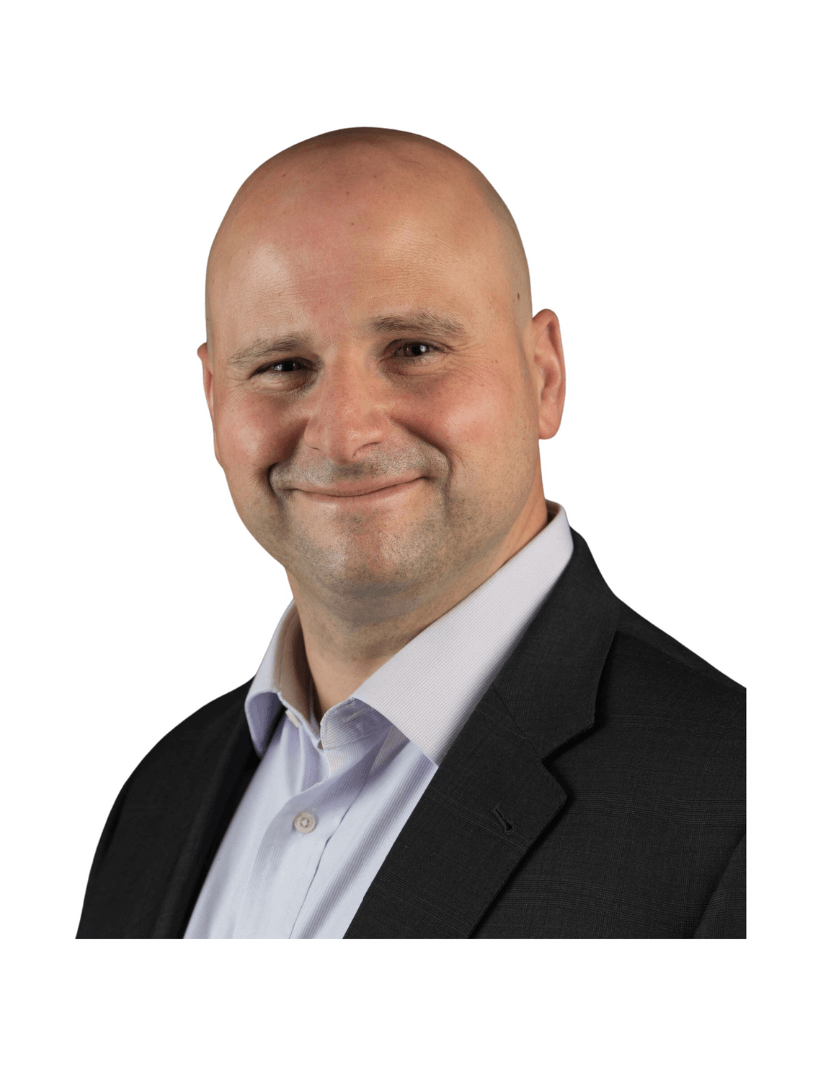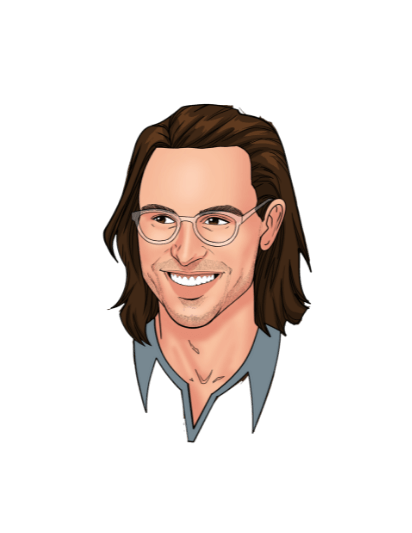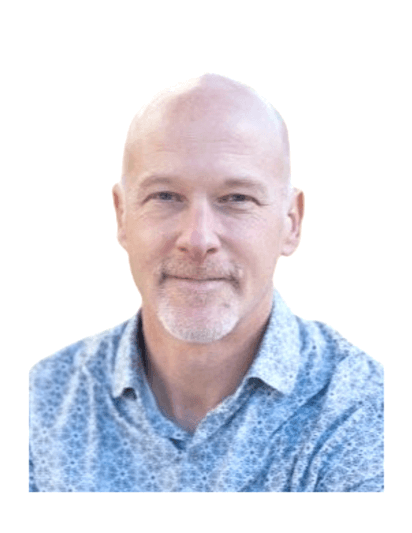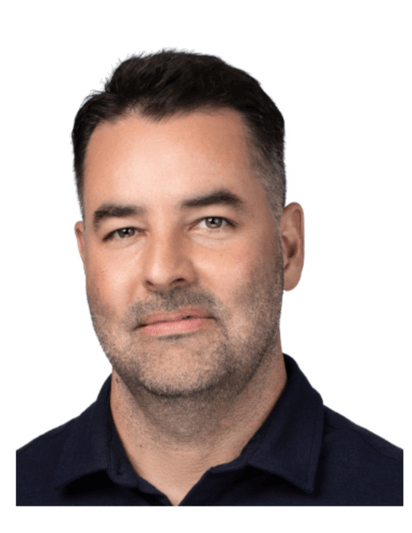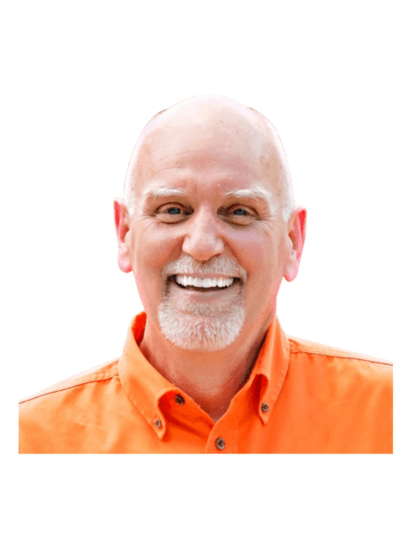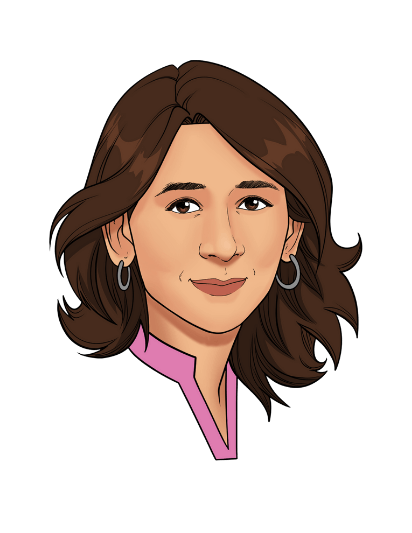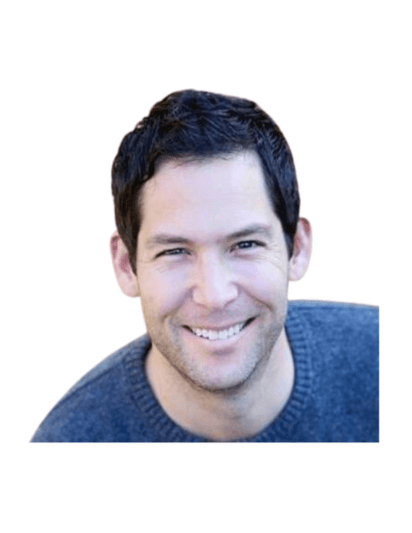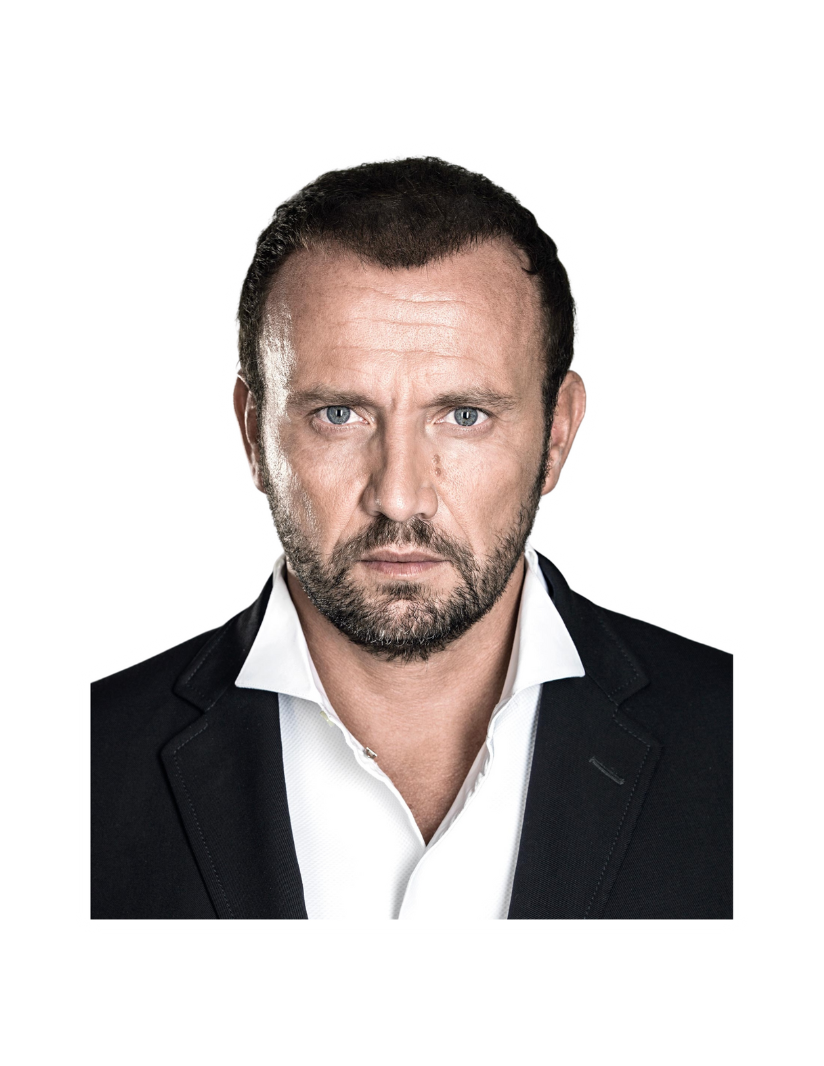
02

Episode 2 50 min
Mauro Porcini, CDO at PepsiCo, Reveals the Traits Shaping the Unicorn Leadership Teams of the Future
Mauro Porcini, SVP & Chief Design Officer at PepsiCo
00:00
00:00

Real innovators are people that are able to combine the ability to dream with the ability to execute to make things happen. And by the way, to make things happen fast.
In this episode
There’s a secret formula behind fostering innovation, driving success, and creating positive work environments in large corporations.
Optimism, coupled with curiosity and kindness, are traits that leaders must embody to create synergies, boost efficiency, and improve working relationships in their organizations. According to Mauro Porcini, these underrated characteristics allow leaders to see progress, stay motivated and overcome any obstacles.
Mauro Porcini is a visionary leader and the first-ever Chief Design Officer at PepsiCo. With a distinguished career spanning renowned organizations like 3M and Philips Design, Mauro has been at the forefront of infusing design thinking into corporate cultures worldwide. He hosts the podcast ‘In Your Shoes With Mauro Porcini,’ where he explores the creative minds shaping our world. Mauro is also an accomplished author, with his latest book, ‘The Human Side of Innovation,’ has earned accolades for his insights into innovation, design, and leadership.
In episode 2 of season 2, Mauro Porcini discusses the importance of dreaming big and creating space for innovation within organizations. He shares his experience implementing the 15% time approach in PepsiCo, allowing employees to work on passion projects. He also highlights the importance of dreaming big and executing ideas through prototyping and experimentation. Mauro also discusses insights from his book, ‘The Human Side of Innovation,’ which highlights the importance of people in driving successful projects. He concludes by emphasizing the importance of love for the people served, love for what one does, and love for the people surrounding us as key drivers of success and happiness.
Tune in to discover Mauro’s wealth of insights in creating a culture of innovation and kindness in your organizations!
Like this episode? Be sure to leave a ⭐️⭐️⭐️⭐️⭐️ review and share the podcast with your colleagues.
07:49
Surrounding yourself with inspiring people
15:15
‘The Human Side of Innovation’
25:26
The 15% time rule
30:55
The importance of optimism, curiosity, and kindness in leadership
44:27
The three dimensions of love in the workplace
Resources mentioned in this episode:
- Connect with Mauro on LinkedIn
- Follow Mauro on Instagram and X
- Read Mauro’s book ‘The Human Side of Innovation: The Power of People in Love with People’
- Check out Mauro’s podcast In Your Shoes With Mauro Porcini
- Join the Supermanagers Slack community
Transcript
Mauro, welcome to the show.
Mauro Porcini 02:45
Thanks for having me.
Aydin Mirzaee 02:47
Yeah, very excited to do this. You know, for everyone not seeing this on video. I love your background setup. I see back there it says this must be the place you have two dogs with you. Do you have your dogs with you all the time?
Mauro Porcini 03:00
Yeah, they’re always here on the desk. Actually, they’re three. Literally with me on the desk, the other one want to come up. But it doesn’t be a is the puppy, and so usually stays on there. But they’re all here all the time. Every time I work, they’re always here.
Aydin Mirzaee 03:15
Very good. It just looks like a very creative setup. So yeah, love to see that. So as you know, one of the questions that we always like to start on is, leaders are constantly learning. They’re making mistakes. They’re getting new insights and learnings. And so wanted to start off by maybe asking you Has there been a recent lesson or learning or an insight that you’ve had that you’d want to share with our audience here today?
Mauro Porcini 03:39
Well, talking about recent, we are just back from a business trip in South Africa, I have 17 different design themes spread all around the world. And they promise them and promise myself that in a couple of years time, I’m going to visit them all and you know, and then over and over again in the coming years. And so it was the time for South Africa. And in this trip, I decided to invite also my leadership team based in New York, in London in Shanga, you know, different parts of the world to join me there. And on top of doing the review with the local design team, the business teams, the idea was to do also an off site and really work together and bond together. So we brought a coach. And we spent a few days working out of a vignette on our bonding, our collaboration, our opportunities as a theme and so on so forth. But instead of just being there, you know, closing an office or closing the house in a beaner. We also had a series of experiences. And so for instance, we went to the house of a local person to cook with her and learning how to cook. Luckily, we met the ex gangster, literally a gangster that became a chef and he told us all his life. And now when you’re born in a specific area in South Africa, outside of Cape Town, you have no choice as either you become a gangster, or you become a gangster, or you become a victim of the gangs, so very, very touching story, and a variety of other things like this. And then I told my team months ago, when we’re setting up this trip, I told them, Look, we are in South Africa, I’m gonna take time off, and I’m gonna spend a few days doing a safari, I can’t go to South Africa without doing Safari. And I was surprised to see that all of them, and almost all of them decided to join, you know, paying for the safari, taking time off with me. And so now the connection of all of this, the connection of time together, both talking about business, but mostly time together, exploring new places, getting in touch with nature, getting in touch with people with completely different kinds of backgrounds, really different kinds of stories, and life journeys was so inspiring. And I know these Well, I mean, I’ve been doing trips all my life, we did have site in other places in the past, but then you go back to your day to day work, you have your meetings, you have your pressure, your your deadline, and your goals. And we just forget, we remember that those are important three, so then we forget. And so my reminder, my lesson, something I want to share with all of you, because it’s so fresh is, from time to time, take time off with your team, get away from your typical location, it doesn’t need to be South Africa, it could be you know, place nearby, but different and get in touch, connect with other people that have nothing to do with your business with your team, with your industry. And get inspired diversity of thinking diversity of location, diversity of conversations is so so inspiring. And so much energy, we have a different bond, as a team, we did a, we really reset our connections, and we’re back full of energy to do more and more of what we used to do. Even better and better.
Aydin Mirzaee 06:55
Yeah, you know, a super tactical thing that I just took away from this as we’ve done off sites, but I feel like the last two offsites that we’ve done as a team, we went to the same place, I think the idea of doing something different, you’re right actually has a special feel to it. And so that’s a lesson I’ll take away. So on the topic of things that are important, that you know, are good, and when you do them, you know, you realize them, but then you go back to your day to day life, and then you forget that they were so important and so good. I feel like business is like full of those things. You know, the trips never seem to be like the very urgent, I have to check that box off. And when it’s been long enough, you forget how good it was? Do you have a strategy in general, I would imagine your day to day work, you probably have a bunch of these sorts of rituals are things that are important, but never urgent. How do you remember to keep doing those things?
Mauro Porcini 07:49
I have a very simple strategy not difficult to execute. I surround myself with people that are really, really inspiring, especially in my personal life. They could come from my design war, the artwork, you could be people coming from finance from different kinds of taking life. But usually people that are innovators, people have been doing great things at different scale in different ways. So I make sure that I connect with them, we go out for dinner for a drink, even if we have busy lives, even if you know it’s not easy to find the time to connect with these people. I do it and is enough a conversation and maybe you have in front of you a super, super successful person. And you see how this person is still thinking how to change the game or to innovate. And then there you are, you’re like, wow, oh, my God, there is so much more that I can do. And you go back, you’re like, Okay, I need to think different. I need to really unlock new opportunities and identify new things to do. And so yeah, people, people, people, and for me, meeting these people is very important. But there are other ways like reading books, or from people with a similar kind of background. Some of the books that inspire me the most over the years, the biographies of successful people reach our brands or Steve Jobs, or even going in the past Leonardo da Vinci, Einstein, you know, I just mentioned actually Jobs, Einstein, and da Vinci they were all written by the same author, that is Walter Isaacson. We have online we can go online, but really try to find stimuli from older people through different platforms. So that no matter how successful you have been in everything you did so far, you will feel literally feel in your guts in your heart in your mind, the need of doing even more because there is so much more than you can do.
Aydin Mirzaee 09:42
I love that it’s such a good strategy. And you’re right when you do that, you’re always thinking that there’s more to do and brings a lot of excitement to your work into your life. You’re obviously very recognized leader recognized designer, one of the most influential designers as per Fast Company. One of the things that I was I’m going to ask you is, what have you learned from the world of design? You know, bringing that into the world of leadership? Do you think designers are uniquely positioned to be better leaders? Are there lessons that they can take away or from others who are not familiar with the world of design? What can they learn from leadership?
Mauro Porcini 10:18
I love the question because there is something unique, I think, in every kind of professional community. And there is always something that you can learn from the professional community that then transcend the community and could be applied to any kind of profession or any walk of life. And design for sure is one of those dimensions. As designers, if you go to design school, they teach you something very simple. They teach you to observe people, and understand them, understand what they need, what they want, what they desire. And then they teach you to create solutions for their needs and their wants, the solutions could be products could be brands, could be services, and experiences. And this is what drives designers, you know, you aren’t excited by the idea of creating something valuable and meaningful for people, then they tell you, by the way, you also need to make money with this, you need to sell it to them, you need to also learn how to make it. And so they teach you a little bit of business, and they teach you a little bit of technology, manufacturing, you know, all the dimension. I just mentioned, essentially, the three features of design thinking, desirability, or people visibility or technology, manufacturing, and viability, all the world of business. Now, already, this, the three lenses of design thinking is something super useful to apply to any kind of problem that you have in an organization, any kind of opportunity, always think about what people really, really want. Don’t fool yourself. So many times, we fall in love with a new technology with a pattern that we have, or with a business model that we Master, don’t fool yourself, start with people, and then connect the three dimensions seamlessly in parallel. But what designers do once again, is that they fall in love with people, they think that the most important thing that you need to do is to create something meaningful and valuable for people and everything else will come. That is very different from a more traditional business kind of mindset, or what you learn at business school, where they teach you first, to grow the business, you need to grow the business, that’s your goal. And then they tell you well, you have different levers to do it. You have the product, you have communication of distribution, you have price, you know the piece of the marketing mix, you have different kinds of but they’re just levers. So you may be a very successful business leader, with a very mediocre product with a very mediocre brand, if you have the right barriers to entry if you play your levers in a smart way. Now, this has been true for many, many years, probably for the history of recent business. But everything’s changing in the past few years. In the past 10, 15 years, everything is changing. Many of those big barriers to entry are crumbling down under the winds of globalization, digitization, new technologies, big corporations find themselves competing for the first time in history with startups that are entering your market or creating a different competitive landscape. And these new products, these new brands are often more engaging for people, for consumers. For the people out there, they’re more engaging, because maybe they’re more stylish, maybe just because they’re new and therefore exciting. Maybe they’re more sustainable, maybe they’re healthier, maybe they’re more personalized, maybe they have something that you cannot have B Corp because you have so many infrastructure and costs and specific rules you play by that eventually they don’t think about Uber at the beginning, or Airbnb disrupted entire industries, they were playing by specific rules, and they just reshaped the rules rewrote the rules. So again, we live in a world today, where big companies or small companies, they have just one choice. Focus on people what they need, what they want, and create something extraordinary for them. Forget about your competitors. Forget about your business model, forget about your patterns, create something extraordinary for people. This is what design can offer to the business world. Designers have the kind of mindset by nature, some of the purest designers are even bothered by the fact that you need to sell these ideas to people we would like to give to humanity our ideas is a completely different starting point. So we need business leaders around the world to embrace this idea of love for people of caring for people. We need to look at those people as if they were your parents, your daughters and sons, your friends, people you really care about and you want to give them the best possible solutions.
Aydin Mirzaee 14:52
I love that and you know, you really care about this idea. And you wrote the book, ‘The Human Side of Innovation: The Power of People in Love with People.’ And so is this the main idea behind the book to approach everything from like a people first perspective and to fall in love with the person before the other parts that come in?
Mauro Porcini 15:15
Yeah, look, this is a book written by a practitioner, I’ve been doing actual projects that go to market in essentially, every industry you can imagine, for more than 25 years, when I say every industry that you can imagine, the past 12 years is food and beverage. But in the past, I was working for 3M for 10 years as the Chief Design Officer, we were working in the office business, in the aerospace business, in healthcare in so many different fields. And in all these companies, not just the one I work for, but going to conferences, talking with people that I hire from so many different corporations over the years, talking with consultants and everything. So many times when you talk about innovation, you talk about branding, you talk about design, people talk about processes, you talk about frameworks, you talk about tools, you hire these expensive consultants, and they come in and they offer you that process, the process that is supposed to solve everything, even as designers, you know, you come in with design thing in design thinking is gonna solve the province of the world. That’s what I was thinking at the beginning of this journey. And I was offering this to this company. So all of us often, when you are in a company with a big scale, you think that processes and tools will solve everything. And then over the years, again, by practicing projects, I realized that it was not the case at all, there at the beginning of my 3M journey. After a few years I was running, you know, those and then hundreds of different projects, I paused and they looked back, trying to understand what was working and what was not so that I could scale up and replicate, you know the successes and avoid the mistakes, and then realize that there were many projects, again, they were doing well and many others that didn’t. And so the first reaction was, well, maybe I need to tweak the process, the way we’re working, then you know, the configuration of the team or interactions with other teams, but we’re, and then I came to the realization that even that was not enough. And I came to a realization. And now you know, when I’m going to share it, it’s pretty obvious, but often it doesn’t happen in companies, what was making all the difference? Were the people assigned to those projects, the people in my team in the design team, the people in other teams in marketing, finance, in HR, you know, and then the people assigned to those projects in the agencies that we were working eventually, you by the work of an agency, maybe a big name, but the truth is that the quality of the work is not connected to the quality of thinking of the people working on your project. And then they realize that there was not a very profound conversation, understanding and strategy around the people that you are having the team, what are the characteristics that really make the difference? Are we really hiring the people in the right way, developing the people in the right way, and making sure that when a project fail, we analyze how people behave, how they talk, how they connect with each other. And so again, I realized very quickly, that the ability to think be the ability to execute the curiosity of learning things, the respect of other professional backgrounds in the team and teammates, the resilience, optimism, you know, they were a series of different characteristics. They were making the difference. So I broke them down, I share them with our talent acquisition team with HR. And I asked them to find me people with those kinds of traits, they became the filter for us, for all the organizations and the housings of designers have been hiring over the years in 3M. In PepsiCo, then it became a sort of compass for myself, to make sure that I work on those different soft skills, and they develop them further and further and further. And they became also a filter we use to identify the talents within our team and to invest in them and grow them to build the leadership team of the future. So these traits are really something that make all the difference of the world is all about people. And in the book, I talk about 24 different characteristics that really make the difference. For me for what we’re doing for this team that started from scratch in PepsiCo, there was not designers. And today we are more than 350 designers with 70 different locations around the world. And growing and things are going very well. So these soft skills have been really, really important for us.
Aydin Mirzaee 19:43
Yeah, I love that. So it’s really the combination of all the things that you’ve learned by running so many different projects across different industries 20 something years. And so it seems like it’s not necessarily configurations it’s about finding the right people. And so you’ve identified the Is 24 traits? I’d love to hear maybe an example or two, what are one or two traits that you tend to look for?
Mauro Porcini 20:08
Yeah, look, I’m gonna give one example that is more of us in the world of innovation and business, and yet, it’s not happening too much. And then I’m gonna give you a couple of examples from that are less expected. You know, when you talk about business and innovation, you want people that are able to think big, to have visions to dream. And the reality is that we live in a society that doesn’t like dreams, and dreamers, you know, we’re all born with that ability to dream. I mean, I have a daughter that is two years old. And she’s they’re always fantasizing and imagining different wards were born like this, all of us, every single individual, but then we grow up, and people surrounding us start to tell us that dreaming is childish is naive, you should stop dreaming, but you protect the ability to dream, you go to school, you go to university, you get out of school, and you go to work, and you’re still eventually dreaming, you dream that you may change the company, you may change the product, you may change the industry. And then once again, people around you that remind you that that’s crazy. That’s so naive, that Who are you so arrogant to think that you can change this industry of this company? You know, that didn’t change for years? Why do you think you have that ability. And so most of us stop dreaming thinking that dreaming is wrong. There are few though, that protect that ability to dream, they keep dreaming the key, thinking about different words. And in the book, I talk about this, if you don’t dream, you will never have the ability to realize that dream, you need to start with a dream. Now, just dreaming is easy, though, you know, even though many people don’t do it, even if you do it is easy. You can live in the comfort zone of your dreams and complain about the fact that this very tough word is not understanding you, the real innovators are people that are able to combine the ability to dream with the ability to to execute, to make things happen in by the way to make things happen fast. And here comes once again, design thinking that, you know, the pillar of design thinking is the ability to prototype to experiment. Great innovators are people that dream of these big visions. And then they start to prototype to execute through different mock ups experiments. And the prototype goes from a sketch on a napkin during a launch all the way to prototyping a new business model or launching a product in a market maybe in an online channel, or maybe for a company like ours in a country where the risk is lower than doing it globally. But all the way to market. And everything in between is this ability to experiment with your ideas. Now, often you meet people are great visionaries are not really good at executing and people that are great at executing, but they’re executing against the wrong vision or something’s very conservative. Now, this is kind of obvious in the Innovation Board, even though once again is not happening. And so I think is important for us as leaders in these companies to call out companies, organizations, leaders that don’t do it, we need to do it. And we need to find people are comfortable combining two dimensions. But there are other characteristics that are less of use if you want.
Aydin Mirzaee 23:22
Before we jump into the other one. So you say that the dreaming one is obvious. And I think I agree with you that when you first start out kids definitely dream maybe dream a little bit more. But definitely as reality sort of starts to hit and the more you know, you live on this earth, the more you get your dose of reality, the less maybe you start dreaming some people continue to be dreamers. But as silly as this question is, how do you look for that in people? But also how do you encourage people that join your teams to do that kind of dreaming to?
Mauro Porcini 23:56
Well, a few things first, for the dreaming part, as well as for every other characteristics of these innovators are they’re called the unicorns. And I can tell you later why I call them unicorns but you need as a leader to try to embody those characteristics as much as possible. There is nobody that can embody all of them in a perfect way. But each of us can try to be the best version of ourselves in each of these dimensions. And life is a never ending journey to get better and better and better knowing that you will never arrive to perfection. You know, the perfect unicorns doesn’t exist, the leaves in what plateau will call the world of ideas and you need to attend there. So first of all, embodying this so being I am a dreamer, and I force myself to have the kind of mindset all the time like in every scale of project, you know, the dream changes on the base of the scale of project if he is, I don’t know, Pepsi, thinking about the future of Pepsi, it may be a dream The biggest scale trying to understand how to change the world of saw thus, the health factor the sustainability factor, how building brands in an engaging way, in a digital world, you know, there are many macro challenges. But if the project is, I don’t know, to re design, especially addition of Pepsi once again for Halloween, even there, the dream is how can I do something that nobody ever did before? So how can you push the boundaries in there’s more projects as well as the big one all the time. And so for leaders is important to behave in a way so that people aren’t inspired to do the same thing. Then another thing that they do, I was fascinated when I was at 3M by the 15% time rule, essentially, for many, many years, it was created in the 50s in the company people has the ability to do whatever they want, with 15% of their time using resources of the company to go after projects that they love they fall in love with. And this is the way posted notes. For instance, were invented in 3M through the 15% time rule.
Fellow 26:10
If you’re finding yourself in too many meetings and still struggling for visibility in all areas of the business, the team at Fellow developed an AI meeting assistant that records, transcribes, and summarizes your meetings. Now you can skip meetings altogether, knowing that Fellow will give you the summary of what was discussed and decided. And for those meetings you actually need to attend, Fellow will take detailed notes of the highlights and decisions, so everyone can stay present during the meeting knowing there will be an accurate and automated record of the outcomes and next steps. Fellow is helping organizations get more done with less. Start your free trial by heading to Fellow.app and start having fewer, more effective meetings across your organization today. Now back to the episode.
Mauro Porcini 26:58
So I introduced the same approach in PepsiCo in my design team. And essentially, in that 15% time is where people love to drain, you know, is the projects that are not chartered that don’t have, you know, deadlines and pressures where you can think well, maybe I work in Pepsi, but they see an amazing opportunity lays, and I see this opportunity because I’m aware of an amazing technology that I would like to use to re conceive completely the way you do packaging inlays, or maybe because I’m been observing my kids eating shapes and snacks during a party or a school and then thinking about different ways of you know, serving shapes as next to them or different kinds of formulations, different recipes, or God knows what is where you have really the ability to do whatever you want, you can dream. And so that’s another way to push people to have that kind of mindset. But then it’s interesting, because everybody as the rule, you know, everybody can do it in my team. But there are the dreamers, the real dreamers that really embrace it, and really leverage the 15 and probably is 20, 25. And there are others. The others that don’t, you know, there is not that everybody needs to be a dreamer to the extreme is fine. But the dreamers, the one that are able to leverage the kind of ability, then they have the kind of mindset in every project, and they apply that in every project. So the 15% are my behaviors. They’re just act as catalysts to inspire people to behave in a way and to let them understand also, that it’s okay to dream. Because often, once again, we are surrounded by people and within companies outside of companies that tell us that is not okay. We live in a society that is designed on this need of stability, obviously, I mean, society needs to be stable, dreamers are destabilizing, dreaming is risky, is difficult to control. And if everybody in every function in the company in every part of society, we’re all dreamers, it will be difficult to them make things happen in a certain way. Companies are built on efficiency and effectiveness. And so we need the right balance of all these characteristics to be successful at the end. And then I balanced of people within the team as well, obviously.
Aydin Mirzaee 29:16
Yeah, so a couple of interesting points here. One is that I had heard about the 20% time, you know, and Google doing that, but it’s really refreshing to hear that actually, that came way before and 3M was doing it way before Google was founded. So that’s super interesting. As a side note.
Mauro Porcini 29:32
Can I mention something about this? So if I remember well in 3M was 1954 when William McKnight, the iconic CEO of 3M that made 3M what it is today, created the rule. If he’s not 54 is around that time. Google if I remember what is early 2000, but what is interesting is that 3M, I was fascinated by the innovation machine of 3M. But I’ve never been really good at storytelling what they do. They are really good at doing technological innovation, maybe a little bit less about branding themselves for what they do. While there are many other companies that are so much better in branding and storytelling, what they do, and you need both, you need that innovation technological machine, but also the ability of branding and storytelling together, the two things are super powerful.
Aydin Mirzaee 30:22
Yeah, super interesting learning there. But what I was gonna say about the, we’ve talked about one of the characteristics, and you know, so far, you obviously have to embody it and show it yourself. But I love the fact that you’re also saying you want to create systems so that those things can also happen. So it’s not just, you know, obviously, like, there’s the motivational point of view. But then there’s also a system to actually encourage that kind of behavior as well. And so yeah, I love seeing that. So what’s another example? What’s another one of your favorites?
Mauro Porcini 30:55
Well, in terms of characteristics, optimists, curiosity, and kindness are three characteristics, and many others have them linked to this. So I like to mention these three, because there are ramifications, you know, the soft skills as well. Optimism is super important. You know, I’ve been hiring over the years, people that were really, really good designers really good at understanding the business. But they were not optimistic kind of people that are kind of pessimistic, so they will tend to look at the glass always half empty. And when you innovate, if you are not optimistic is a disaster, because you will face roadblocks and problems and what people call failures. Or you should call experiments all the time, every day continuously. So if you’re not able to see the progress, to be excited by the goal, the vision, the dream, and get energy out of it. And instead, you focus too much on the things that are not happening yet. Sooner or later, you will give up. Now, optimism, as well as all the other soft skills that I talked about in the book is something we’re all born with. Some of us have some of the skills more than others, like more developed than others, some people are more optimistic than others. But optimism is something that can be also trained in people, there are different techniques to try to increase your optimism if you are more of a pessimistic kind of person, for instance, where they just mentioned, when you are in the middle of a very difficult moment, and we all go through those difficult moments, is so important to try to step back and put things in perspective. And remember where you’re coming from. And remember, the progress that you did in the past weeks, years, you know, in that journey that you have, and appreciate that be grateful for that. Really celebrate that. And then remember the dream. Now you need to have a dream dog, many people don’t. But if you remember the dream, where do you want to go? Imagine you’re running a marathon, you remember that you want to arrive there, you’re in the middle of the marathon you have cramps is so difficult burn like, wow, I’m going to appreciate the fact that they already did all these miles. And then wow, now I imagine myself going through the line at the end, I’m arriving. So you get the energy from the past and from the future. And then you put the president in perspective, and you’re like, Okay, it’s just a step towards something else. And so you go back to the kind of tea mystic positive kind of look on life. Curiosity is key curiosity is so important. You know, in companies, if you are a leader, you know, people listening to us right now you’re a leader in a company, there is a very high probability you have been trying to figure out how to train your people, what kind of tools and platforms in PepsiCo, we have so many different kinds of tools and trainings available to people, we give coaches all kinds of things. The truth is that if people are not curious, if you don’t have people that are really thirsty for knowledge, that are looking at opportunities, you know, every time they interact with those tools, those platforms, and then people surrounding them, then you’re just wasting your money with your tools and your platforms. So if you care about training people, the first thing to do is to understand if you have curious people in your team, and foster curiosity, nurture curiosity, to remind people that curiosity is a key driver of innovation, of growth of performance. And so for us, Curiosity is a very important filter to understand who are the people that will grow in your organization? Let me give you some very practical example. In design, you have different kinds of disciplines, you have graphic designers, industrial designers, and so on so forth. So you arrive to PepsiCo, you’re a graphic designer. If you’re curious, you’re gonna go to the industrial designers, you’re gonna go to the digital designers to the experience designers are you try to learn as much as possible from them. Now, if you look at the fortune 500 companies out there, a variety of CEOs and CMOS in this companies are PepsiCo. Luminize, if you’re curious, as a designer in PepsiCo, you’re going to look around you are you know that many of the marketers and the salespeople and the business people surrounding you will be probably the CEOs and the CMOs of future corporations translate. In other words, you have an incredible opportunity. You’re surrounded by amazing talents. And instead of looking at them as different from you, I’m a designer, I know it all, we are the best, we are cool. And you marketers uses people, you start up with finance people, you just don’t get it. You think, wow, what can I learn from these people? What can I learn from the finance people from the marketing people from HR from all the different functions? And now this is the community, then you can go one step further, what can I learn from James, what can I learn from Jane? What can I learn from these individuals? What do they have that they can learn from? These were curious people? Do they always look at the people they meet within the organization as an opportunity to learn, you know, my colleagues in marketing in r&d, they’ll be my mentors, my coaches, my teachers, my PhD and my MBAs over the years, I learned I can go on a stage of the war business forum, or of big tech innovation conferences and talk about innovation, with the right vocabulary in a way that is relevant to those audiences. Because I, I learn from people with those kinds of backgrounds within the companies and bi curious people travel, they read, they engage in conversations with people that are different from them, they love diversity, because they know that in diversity of thinking, there is the precious gift of knowledge, innovation is all about you know, we look at things in a certain way everyday you go to work. And you look at your industry, your product category, your brand, always in the same way everybody’s having the same perspective. Innovation is about looking at that. And then one day changes like your perspective and seen something that nobody ever saw before. Now, this is so insanely difficult, because we all have our professional backgrounds, our biases, our story, I have it, you have it, my colleagues have it, we all have it. So the trick is to engage in conversations with people that have different perspectives than yours. And in a respectful dialogue, respect is another characteristics of the unicorns. My perspective, perspective, number one will merge with perspective. Number two, we will be perspective number three. That’s the novelty perspective. But you need people that are curious enough to engage in conversations with people are different from them. And then to close kindness. Kindness is the most underrated characteristic you can think of in corporations, actually, they tell us exactly the opposite in the business world, they tell us that kindness is the weakness that is a vulnerability. And especially when we’re talking about diversity, especially women, for instance, you know, they don’t want to show too much. They’re kind because there is already the stereotype that the woman eventually is weaker. So women, they need to toughen up. So for them, it’s even worse than for men. I mean, it’s a disaster, in reality is that in my journey, kindness has been one of the most amazing driver of success for me individually and for us as an organization. Why? Because kindness connect, kindness, drive features, kindness, create synergies. And now there is a very different situation today than 2030 years ago, in the past, the competitive pressure was very different. It was not so extreme as today, we live today in the world of hyper efficiency, either your company’s super, super, super, super efficient, or you’re gonna have problems in the past, especially big corporations who are so rich, wealthy, fast, they could afford redundancy, they could afford conflict between people putting the same thing working on the same thing against each other, you’re maybe in different parts of organization in different parts of the world. We grew up entire generations of managers telling them that actually healthy conflict between people was good, put people against each other in in Darwinian kind of way, the best idea, we survive the survival of the fittest, and we grow. Well, you can afford that kind of thing. If you have the resources to create this redundancy in the organization. Today, you don’t have those kinds of resources anymore, you need to extract as much efficiency as possible. And so you want people to work together not against each other. By the way today, we live in a world where new generations they grew up by sharing experiences in social media by these meats have been together you know, these us and borders for this new or the new generations don’t make much sense. If you can be friends with people from all around the world, you know In social media in the metaverse, why then you need to get the visa to move to another country. Why can’t we wait? So this is also the future. So long story short, kindness is an amazing connector and can drive efficiency in your organization in so many different ways. And it’s something new, it was not like this 2030 years ago, you didn’t need it back then you need it today more than ever.
Aydin Mirzaee 40:22
Yeah, it’s super interesting. Like, is there an example or a story that you have of whether you’ve seen it in practice, where it kindness really made a difference and help the project go better? Or help an initiative go better? I know this sounds simple. But you’re right, in the corporate world, you know, should we be kind? Or should we be cutthroat? Should we win? Or should we let others when it is a strange, it doesn’t come necessarily supernaturally in a business context.
Mauro Porcini 40:48
Let me give you an example that comes from my personal experience, right? So I grew up in a family, my mother and my father were, there were two very important values. One was cultural knowledge. And the other one was being a good human being for them. They were talking about being a good Catholic, because they’re Catholic, but translated, Etruscan religion is being a good human being, and translated, his kindness be nice to people, good to people and everything. So I grew up with that. I love that. And so I was lucky enough that in the past 22 years, especially 3M, and PepsiCo, actually, even before we my agency, so more than 25, 26 years, I’ve been building my teams, I never went to a position where I found that thing that I built my team, because it was my nature, you know, this idea of kindness. And because I was I grew up with that from my parents, I build my teams. In this way, my teams are teams of kind people are nice, good people. So now, I saw these in action. First of all, they interact with the market organization with the people out there in a nice way. And so the first thing that happen is that the market organization, you know, many times they come to me r&d marketing, and they’re like, it’s so good to work with your people. So nice, they’re so kind. So you create a different kind of working environment. So that’s already a very important factor. The second thing is that you care, you know, you care about others, and you care. If a person is in a difficult moment, you care if a person is not succeeding, you don’t want to be a jerk to this person. So that’s also something that people love it, create a better working environment, but also build synergies in the way you are together. Then the second thing is something that is super important to be effective, especially if you are in a position like design where you are more of an influencers, you don’t own a business, you don’t own a product or a brand you need to influence. So the kind person is the one that is asking himself or herself. How can I help you succeed? Now, this is also very good from a business standpoint, by asking yourself how can you help others succeed? Essentially, if you figure out how to do it, you become indispensable. This has been key for me in design to build design from scratch in perhaps you can train before, because I was thinking, the CEO of PepsiCo, the CMOs of the different businesses, how can help you succeed, both personally and in your specific role. And then again, you start to add them in this way. And they really start to understand the value you bring. And then you become indispensable in what you’re doing. So these are few examples of how to really help starting from the position of caring and kindness for others.
Aydin Mirzaee 43:45
I love that. And that sounds like a very practical way to do it always come from a mindset of like, what can I do to help the person on the other side of the table succeed? Morrow This has been so insightful, so many different learnings. We talked about the characteristics kindness, optimism, curiosity, we talked about surrounding yourself with inspiring people. We talked about observing people to understand them before doing things or building products for them. We talked about dreaming and executing, and so much in between. So one question that we always like to end on is for all the managers and leaders constantly looking to get better at their craft. Are there any final tips, tricks or words of wisdom that you would leave them with?
Mauro Porcini 44:27
Something that really literally synthetize parts are the conversations of today, but my philosophy in general about innovation and leadership is the subtitle of the book, ‘The Power of People in Love with People.’ People in love with people is summarize it all. There are three dimensions of love. The first one is the love for the people you serve for the consumers, the customers, the users, the people out there, really been obsessed with creating something extraordinary for them. It doesn’t mean you’re going to change in your company, your industry, your product from night to day, it means that you’re going to be driven by this dream of changing that industry, that company product and then progressively you up get there is very different than the focus on the short term thinking about your ear goal. And now you get a promotion for the next position, you’re driven by something that is even transcending at the end of the day, your job and your company, and they will give you a lot of personal satisfaction will make you happy. The second level of love is the love for what you do. There are plenty of stats, and data and books written even about the fact that if you love what you do, you’re gonna perform better. So this is important for your company. But you’re also going to be more happy, and your performance is going to be linked. So your level of happiness. So make sure that the people are in love with what they’re doing in your organization, if they don’t invite them to try to change the situation, help them change the situation, to end up loving what they do. But my message to all the people that after trying that are still they’re not loving what they do, then try to change things, leave that company leave that job change job, life is one. And we spent so much time working, that if you’re miserable at work, you’re miserable in your life, and is not worth it, absolutely not worth it. The third dimension of love is the love for the people surrounding us. We don’t live anymore in a world where you can have a one woman or a one man show when the Steve Jobs of the situation changed the game and everything. And then you invents Apple or the computer invented back then is really about teamwork. You know, we live in a society that is hyper specialized, and you need the best best marketing practices, the best finance the best design the best r&d. So for that you need full synergy and love caring is the most authentic driver of the kind of synergy is the root driver is the root cause of everything. And it’s very, very important. And last, you know, there are these three dimensions are law, but they’re connected. I mentioned it multiple times today, to the idea of happiness, I close the book with a chapter talking about how to design happiness, there are three different dimensions to invest on. The first one is invest in yourself in defining your identity, your job is part of it. But it’s much more than that. Because if you lose your job, you don’t want to lose your identity. But what you do in your job is for sure something very important. Make sure that what you do is unique. Make sure that you have a unique point of view on your job description on your role. And make sure that every time you ask yourself, How can I do something different than what anybody else did before in this project in this work in this job, no matter the scale. The second dimension is the love for the people around you, we mentioned it earlier is your family is your friends is your close community and at work is your co workers, the people close to you. You give love in a selfless way, you will get love back, you don’t do it to get it back. But you will get it back. And this gives you so much satisfaction and joy. If you don’t get the kind of environment in a company, try to change things. And if you don’t succeed, leave and find a place where you can find that. The third dimension is do something bigger than you trust, sign yourself have a purpose in life. You can do it in your private life. But you can do it also in your work, in my case at the beginning was trying to leverage design and design thinking to grow these companies, these businesses but outside of PepsiCo, 3M literally been an ambassador of design in the business world. They don’t realize that actually, there was something bigger than that design was nothing else that human Centricity really creating value for people first. And then we create value for companies and for organizations of any kind. So I became an ambassador of this idea of human centricity. And then I realized there was another dimension was even bigger than that. And is essentially what I’m be sharing today with you is this idea of love. Love is really the solution to everything is going to drive better business, better societies, in a better world for all of us to live in. And with the platform that I have the platform you’re giving me today, my social media platforms, the books I’ve wrote, I really want to be an ambassador of this important message for the word.
Aydin Mirzaee 49:33
Mauro, that’s great advice. So much jam packed wisdom in one episode. Thank you so much for doing this.
Mauro Porcini 49:39
Thank you. Thank you for having me.
Aydin Mirzaee 49:41
And that’s it for today. Thank you so much for tuning into this episode of the Supermanagers podcast. You can find the show notes and transcript at www.Fellow.app/Supermanagers. If you liked the content, be sure to rate, review, and subscribe, so you can get notified when we post the next episode. And please tell your friends and fellow managers about it. It’d be awesome if you can help us spread the word about the show. See you next time.
Latest episodes
-
Kim Scott, Bestselling Author of ‘Radical Candor’ and ‘Radical Respect’ on Addressing Bias, Prejudice, and Bullying in the Workplace
Episode 1
Kim Scott
-
Joe Militello, Chief People Officer at Pagerduty: Why You Need to Rethink Your People Strategy
Episode 188
Joe Militello
-
Tony Martignetti, Advisor to Innovative Leaders on How to Make an Impact Without Burnout
Episode 187
Tony Martignetti
Fellow Newsletter
Get exclusive interviews and leadership best practices directly into your inbox.
Wait! Before you go!
You might also be interested in these podcasts
-
Episode 61
Balancing Relationships and Results: How to Deliver Feedback and Encourage Innovation
Ryan Bonnici
Chief Marketing Officer at Whereby
-
Episode 147
Practicing Transformational Leadership: How to Drive Change Through Influence
Nathan Trueblood
Advisor
-
Episode 1
Kim Scott, Bestselling Author of ‘Radical Candor’ and ‘Radical Respect’ on Addressing Bias, Prejudice, and Bullying in the Workplace
Kim Scott
Author of ‘Radical Candor’ and ‘Radical Respect’
-
Episode 135
Voices, Votes, and Vetos: Who Is Making the 100 Million Dollar Decisions?
Jason Warner
Managing Director at Redpoint Ventures
-
Episode 150
The Tao of Management with Patrick Pichette: How Routines Drive Success and Empower Teams
Patrick Pichette
Partner at Inovia Capital
-
Episode 171
Taking Workplace Habits Home: Leadership Lessons for Life
Chester Elton
Author and Keynote Speaker
-
Episode 23
Victories, Insights, and Puzzles: Running Leadership Meetings with Purpose
Andrew Waitman
CEO at Assent Compliance
-
Episode 56
From Maker to Manager: Leveraging the Power of Influence and Storytelling
Chetana Deorah
Director of Product Design at Coursera
-
Episode 176
Stepping Into Transformation: Lessons in Designing Management Training That Sticks
Justin McSharry
Senior Director of Learning and Leadership Development

